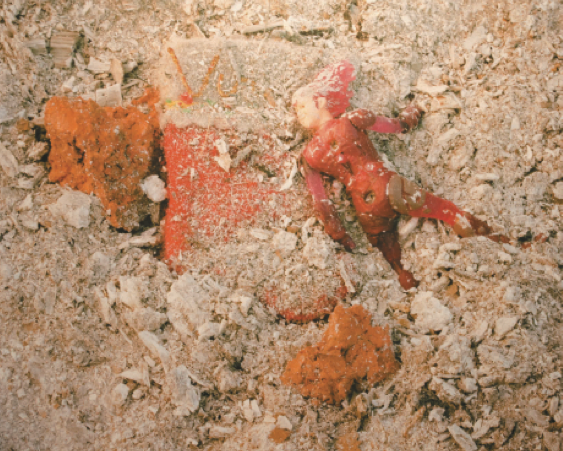The Order of Art
EAST PEORIA — “Art gives us the opportunity to imagine order where none is apparent.” Gary Cawood, photographer and orator of this quote, is currently showing his collection “Excavation” in the Performing Arts Center gallery. “Excavation” is a series of still photographs Cawood has worked on since 2006 that makes use of natural landscapes and unnatural objects against these landscapes.

“The word excavation,” said Cawood in the exhibit’s introduction, “conjures up digging for some ancient ruin…my purpose is to create a more poetic interpretation.” With this in mind, Cawood selects salvaged or discarded objects and puts them against equally salvaged, or “excavated” sites.
“At first I focused on the surprising forms and colors created by erosion,” Cawood said, “Soon I began adding throwaways to the compositions. Like the land, much of the stuff we buy is considered disposable… the photographs utilize the scarred landscape as a context for the stuff we abandon.”
Cawood said to have selected items, including old keychains, books, toys and soda cans, among others, based on his “intuitive sense of the contradictions inherent in our [American] culture.” Like a good writer or musician, Cawood satirizes and explores the darker side of modern culture and “modes of existence,” while creating brilliant and original works of art. Think Vonnegut, visualized.

While dynamic in his criticism of modern culture with his different subjects, Cawood doesn’t forget to be visually dynamic with his “excavated” landscapes. In his photograph “Action Figure,” Cawood makes use of a site with gray rubble, rocks and dust, making the area look like an aftermath of a terrible storm. By using an action figure and Christmas stocking, Cawood may be saying our culture relies on and covets the material, or the perfect. As a result, our expectations will destroy us, like the backdrop area has been destroyed.
In “Crash Landing,” Cawood moves to an earthy, more simple site, but one that shows signs of weathering and destruction. Again, Cawood uses a toy as his subject, which may be to convey a message similar to that of “Action Figure:” If we let the land be destroyed, we will be destroyed. It is note- worthy that the setting is natural and the subject, an aircraft, is not.

Finally, in “Sylamore Creek,” Cawood uses an opposite order, a natural subject against an unnatural background. The plant leaves, a symbol of life, lay dead on a blacktop surface, a symbol of humans altering the Earth in their best interest. In a way, this photograph illustrates the effect of the other two photographs, and describes our society today, where there seems to be more urbanized, desolated things then there are natural and beautiful. All of the photographs, though, are provocative and pleasing in their visual effects alone, without any meaning having to be derived.
The Performing Arts Center gallery hours are generally 8 a.m. to 10 p.m., and will be in effect until after final exams. Between cramming for said exams, take some time to walk over and look at these photographs. You may gain insight on the profundity of the human condition, or you may simply enjoy looking at them.The original and intriguing qualities of Cawood’s photographs have brought them across the United States, being featured in over 60 solo exhibits and more than 100 group shows. His work is featured in public collections in Baltimore, Nashville, New Orleans and Washington D.C., among others. Cawood has also won many awards for his photography, including Visual Artist Fellowships from the National Endowment for the Arts, the Mid- America Arts Alliance and the Arkansas Arts Council.

